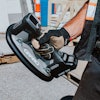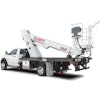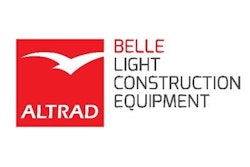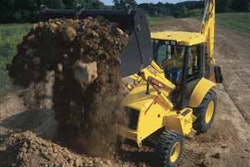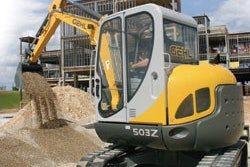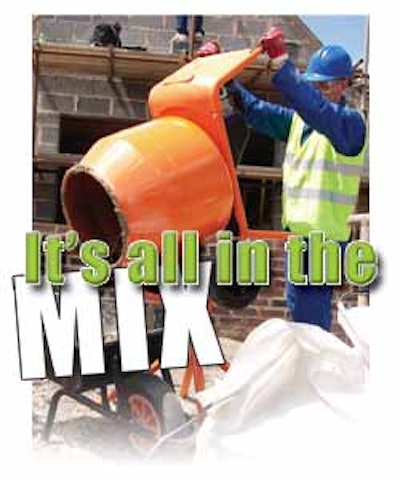
Concrete begins its life in a mixer. Supplying an easy-to-use, well-maintained mixer to customers placing concrete is an important task.
Frequently used for small non-commercial jobs where small batches are required and productivity is not necessarily an issue, portable concrete mixers from 3 to 5 cubic feet are typically considered "homeowner" mixers. But they're also favored by small general contractors, landscape contractors, masons, concrete construction and/or repair contractors and even farmers, who use them for mixing feed and grain.
Those same users who are looking for more productivity can find it with larger portable mixers ranging from 6 to 9 cubic feet. According to Warren Faler, mixer product manager with Multiquip, 9-cubic-foot units are the most popular for rental because they'll always meet a contractor's demand, no matter how big the job.
In addition to mixing concrete, applications for portable mixers include mixing mortar, stucco and grout for patching jobs, residential sidewalks, building brick, block or stone walls or wherever a pad of concrete is required.
"The versatility of a mixer makes it a cost-effective purchase, particularly when, with proper maintenance, these units will last for years," says Faler.
Selection considerations
"Rental businesses always want a return on their investment and low maintenance designs when choosing any kind of equipment," says Frank Wenzel, vice president of engineering at Stone Construction Equipment.
When it comes to portable mixers, ease of getting the unit around shouldn't equal shoddy construction. Concrete weighs about 125 pounds per cubic foot, so a strong frame is critical. Quality design and materials are a must, say sources.
Wenzel notes that components such as the paddle shaft and seal are high wear items. Some manufacturers, like Stone, offer lifetime warranties on these components.
The working end of a mixer - which includes the paddle shaft and drum - is the most important component. "Look for a strong paddle shaft and a thicker drum," says Wenzel.
Most manufacturers offer steel and polyethy-lene drums to fit individual user preferences. There can be minor differences in steel and poly drum width and depth, but they're generally the same in terms of size and shape.
"Steel drums are more durable, but cleaning can often be tedious with denting and other damage to the drum a possibility," says Faler. "Poly drums, which resist rust, can be cleaned in minutes by simply tapping with a rubber mallet."
Wenzel notes that when choosing the type of drum, user preference is key. But so is the type of material being used in the drum.
"Materials vary depending on where in the country you are," says Wenzel. "And depending on the material, the wear on the drum is different."
Some mixer manufacturers, like Stone, offer drum kits to easily interchange drum types. "Some users prefer the easy clean up of poly," says Wenzel. "Others like the straightforward steel drum. It depends on their experiences and preferences." With a drum kit, you're ready with either type.
Portable mixers offer various types of power systems, including electric and gasoline options. Single-phase electric motors are available in the 1/2 to 1 1/2-hp range, while gas engines span from 3 to 13 hp.
"About 95 percent of the mixers on the market are gas-powered because they're more portable," says Faler. "Electric mixers require an electric power source be nearby, which is often inconvenient. These mixers are used primarily in stationary locations such as factories. But electric-powered mixers, in contrast to gas models, do not emit fumes and are preferred by some contractors."
As with the construction of the unit, durability is key with its power source. According to Nicholas Taylor of Belle Group Inc., their electric motors are double insulated, which is important when working in close proximity to water with a metal frame.
Maintaining mixers
Concrete mixers are simple in design and simple to maintain. Keeping the mixer clean is the top challenge.
"Clean-up is key," says Wenzel. "You'll have a productive mixer for a long time if you keep it clean."
Sources say that rental businesses need to stay on top of the mixer's cleanliness. "When a mixer is returned to the rental store, it will often be stored without proper cleaning," says Faler. "Not only will the mixer have a poor appearance, but failure to clean the machine will lead to build up in the drum, lowering its capacity as well as contaminating the next renter's mix."
It's a good idea to ask customers to clean the drum after each use. When the unit returns, check the ring gear, drum lock, grease points and bearings to make sure they are clear of concrete build-up.
As noted, poly drums are probably easier to clean than steel. Multiquip's EasyClean mixers feature polyethylene barrels and require only a few taps with a rubber mallet at the end of the job to remove hardened material without dents, rust or damage to the mixer.
Rental businesses also often fail to maintain hardware tightness and regular engine maintenance, leading to mixer inefficiency and downtime with lost revenue when the hardware and engine fail. Remember to always follow your owner's manual for proper maintenance steps.
Concrete mixer designs haven't changed much in the last 50 years, and it seems that these simply designed machines are not going to get a new makeover anytime soon. More hydraulic options are on the horizon, however, according to Wenzel at Stone. Hydraulics address noise reduction, which is a hot topic on today's jobsites.
One thing is for sure, these simple machines can create a tidy profit for your rental business if you select the right one for your customer base and keep them clean and well maintained.
Micro mixers on the march
These days everything, from cell phones and digital cameras to some construction equipment, is getting smaller. Concrete mixers are following that trend as well. Tow-behind mixers will always have their place, but a need from both contractors and homeowners for a mixer that travels lighter, uses less material and cleans up quickly is creating a growing interest in smaller mixers with capacities of a yard or less.
The trend might have originated in Europe, where compact batch mixers have been in vogue for years, says Nicholas Taylor of Belle Group Inc. In Europe, the micro mixers come with capacities as small as 2.5 cubic feet. Stateside,
Belle Group's Mini 130 and Mini 150 feature a capacity of 3 cubic feet, electrical or gas power and a poly drum for easy cleanup.
"In Europe, compact mixers have been the thing because they don't have the wide-open spaces we have here," says Taylor. "And that might become more of a factor in the United States as well."
Also driving the trend toward compact concrete mixers is the contractor that might have only an occasional need or the homeowner who has a small project to complete - which is where rental comes in. In the above examples, a tow-behind mixer could be just too cumbersome. In most areas, customers can rent a 3-cubic-foot mixer for $35 to $50 a day.
"Home improvement shows on TV are broadening homeowner's minds," says Taylor. "And contractors are also seeing that this is a neat thing. They don't need a big truck anymore.
"Small is beautiful," says Taylor. "Compact mixers can be put right where you need them. They can fit in an elevator or in the back of a car. They're very flexible."
